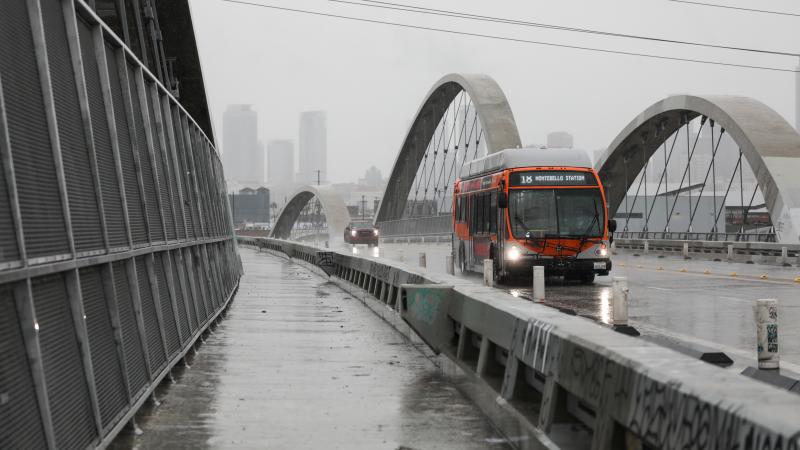Attempts to blame Maui fires on climate change challenged by downed power lines, possible neglect
Power lines, coupled with land management mistakes by county officials and alleged neglect by electricity companies, not "climate change", have been raised as the primary reason for the tragic events
Evidence has surfaced indicating the Maui wildfires that have tragically claimed at least 106 lives, may have been—at least partly—caused by downed powerlines mixed with a lack of preventative measures.
Since the fires erupted last week, many media outlets, politicians, and activists alike have reactively blamed climate change or global warming as the culprit. That instinct has run so deeply that a book was just published making that connection. Environmentalists recently created a social media mob that objected to an ABC News headline reading "Why climate change can't be blamed for the Maui wildfires" pressuring the network into altering its headline to "Why climate change can't be blamed entirely for the Maui wildfires."
"The media, climate activists and academia were poised to blame this wildfires on 'climate change' before it even happened," Climate Depot’s Marc Morano told Just the News, citing the book as an example. Climate Depot is a project of the Committee for a Constructive Tomorrow (CFACT), a non-profit group that says it "Advocates the use of safe, affordable technologies and the pursuit of economic policies that reduce pollution and waste, and maximize the use of resources."
Potentially contradicting the climate change blame, The Washington Post reported that the first known fire in the Hawaii county was likely caused by downed power lines as a possible consequence of heavy winds from Hurricane Dora. The Guardian (UK) also reported yesterday that "Untamed grassland helped fuel the spread and intensity of last week’s deadly fires on the island of Maui."
Hawaii was already on red flag alert for winds when the fires broke out.
Video footage outside the Maui Bird Conservation Center, for example, shows a bright white explosion in the woods before it went ablaze. At that same time, "10 sensors in Makawao, a small, rural town in the East Maui region of Upcountry… recorded a significant incident in Hawaiian Electric’s grid," The Post reported. "The bright light in the video was probably an "arc flash," something that happens when a power line "faults."
A "fault" is when a power line comes into contact with things like branches or other vegetation, creating sparks that can turn into fires.
Maui resident Shane Treu also witnessed one of the first fires when a power pole snapped, sparks flew, and the line fell onto the grass, igniting it immediately, said the Associated Press.
Treu thereafter began filming a series of videos showing the fire burning.
"Many factors could have caused the fire, including downed power lines," Morano stated, "but the overriding cause seems to be bad land management, leaving overgrown flammable grass neglected."
This latter view has been shared by Hawaii wildfire specialist Dr. Clay Trauernicht, since at least 2014, when he released research warning that nonnative vegetation posed a serious threat to the islands. He has also blamed the 2023 tragedy on poor planning and reforestation efforts. Trauernicht is a faculty specialist at the University of Hawaii's Department of Natural Resources and Environmental Management.
Energy companies are now being sued for gross negligence in the lead-up to the deadly blazes. According to one lawsuit, the power company "knew of the extreme fire danger that high winds posed to their overhead electrical infrastructure," like potential power lines collapsing, but "chose not to deenergize their power lines during the High Wind Watch."
To make matters worse, the lawsuit, which was filed on August 12, alleges that the companies also "chose" not to deenergize even after power lines fell "and were in contact with the vegetation or the ground."
Time Magazine reports that Hawaiian Electric reportedly powers 95% of Maui.
Although the company never had a power shutoff plan like many other states do, Hawaiian Electric spokesman Jim Kelly told CNN that precautionary shut-offs have to be arranged with first responders. “Electricity powers the pumps that provide the water needed for firefighting” Kelly explained.
Morano cited a "total failure of the emergency alert system, which never issued any sirens to warn the locals about the impending fire threat."
After the destructive Maui wildfire of 2018, Maui County released a report on "wildfire prevention and cost recovery" in which "prevalence of combustible materials," "Poorly maintained and overgrown properties," grasses, and "low hanging, failure, or shorting of aboveground power lines" are all listed as admitted causes of wildfires, but not much seemed to change between then and now.
Meanwhile, the non-profit Institute for Energy Research’s Distinguished Senior Fellow Dan Kish is being cautious about who and what to blame for the tragic fires. Kish also explained that the solution proposed by many climate activists would only make things worse.
"It's too early to blame the Maui fires on carbon dioxide in the atmosphere… [and] it's probably too early to blame them on downed power lines, too, until all the facts are in," Kish said. "What is fascinating is that the same people who are blaming it on the climate are also pushing for Biden's massive expansion of power line transmission capacity in his Green New Deal, which would increase the likelihood of such fires in the future."
Echoing other experts, Kish also noted the alleged "bad land management," which has fanned the flames of wildfires in other parts of the world, such as Canada and California, as of late.
"The same voices who hysterically blame everything on the climate also oppose forest and land management," Kish concluded.
Follow Addison on Twitter.
















